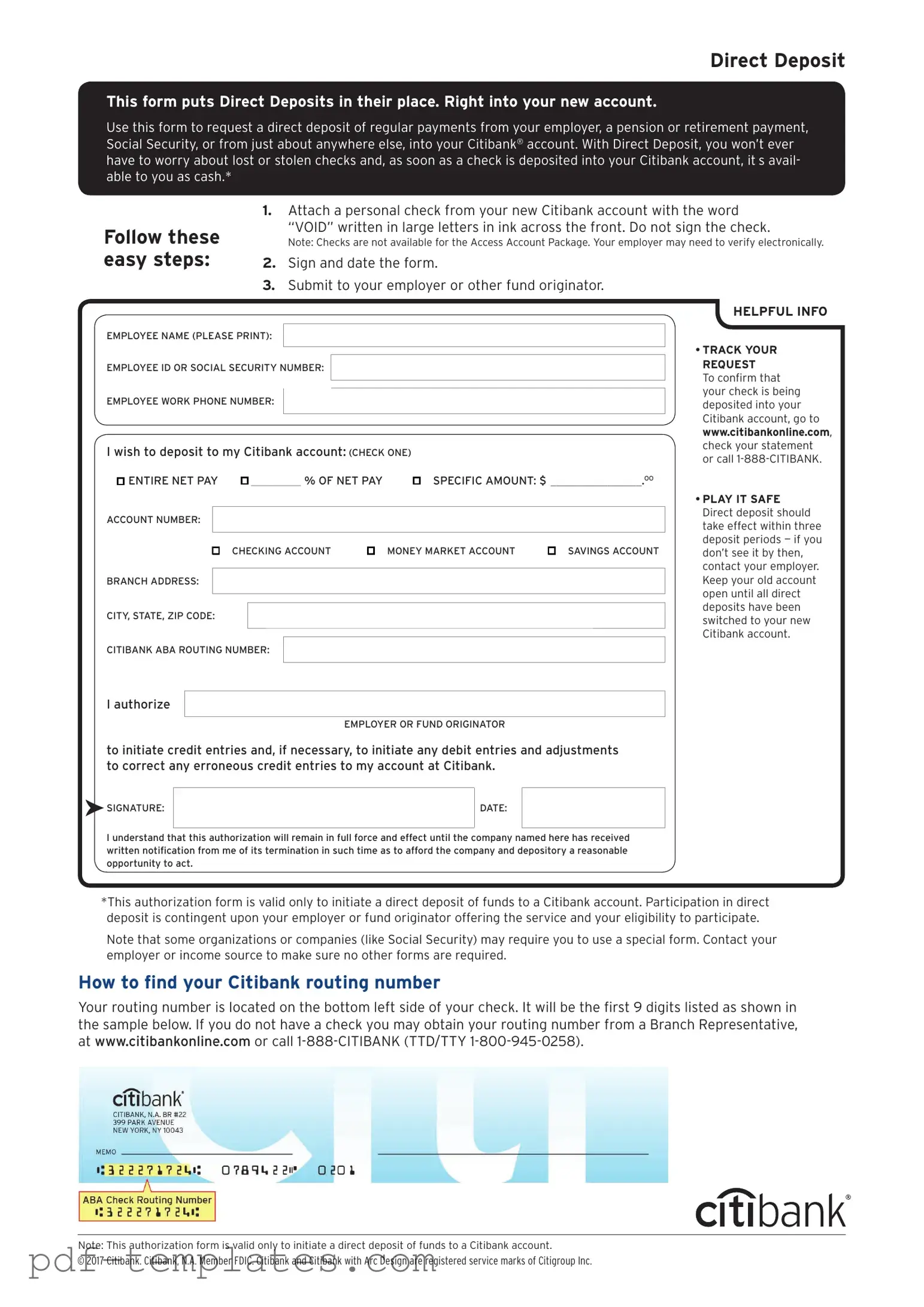The Citibank Direct Deposit form shares similarities with the Payroll Authorization form. Both documents serve the purpose of facilitating the electronic transfer of funds from an employer to an employee's bank account. They require the employee's banking information, such as account number and routing number, ensuring that payments are directed accurately. Additionally, both forms often necessitate the employee's signature, indicating consent for the arrangement and confirming that the provided information is correct.
Another document that resembles the Citibank Direct Deposit form is the Automatic Payment Authorization form. This form allows individuals to authorize recurring payments, such as utility bills or subscriptions, directly from their bank accounts. Like the direct deposit form, it requires detailed banking information and the account holder's signature. Both documents aim to streamline financial transactions, reducing the need for physical checks and enhancing convenience for the account holder.
The Tax Refund Direct Deposit form is also similar in function and purpose. Individuals use this form to request that their tax refunds be deposited directly into their bank accounts, much like how employees receive their salaries. The form collects essential banking details and requires the taxpayer's signature, ensuring that the government can efficiently process the refund. This document highlights the growing trend of electronic payments in both employment and tax-related transactions.
Additionally, the Vendor Payment Authorization form shares key characteristics with the Citibank Direct Deposit form. Businesses often use this document to enable direct payments to vendors for goods and services rendered. Both forms require the vendor's banking information and a signature, ensuring that payments are made directly and securely. This process not only expedites transactions but also minimizes the risk of lost or delayed checks.
The Student Loan Direct Deposit form is another document that mirrors the Citibank Direct Deposit form. Students utilize this form to have their loan disbursements deposited directly into their bank accounts. Similar to the other forms, it collects banking details and requires a signature for authorization. This method simplifies the disbursement process, ensuring that students receive their funds quickly and efficiently, thus supporting their educational expenses.
The California Earthquake Authority form is crucial for California residents seeking protection from seismic risks, ensuring they have comprehensive coverage. This form requires detailed information from applicants, including personal and property details, and helps streamline the insurance application process. For those looking for additional important documentation related to this and other processes, they can find resources at All California Forms.
Finally, the Social Security Direct Deposit form aligns closely with the Citibank Direct Deposit form. Individuals use this document to authorize the Social Security Administration to deposit benefits directly into their bank accounts. Both forms require the recipient's banking information and a signature, ensuring that funds are transferred safely and without delay. This practice reflects a broader shift towards electronic payments in government services, enhancing accessibility for beneficiaries.
